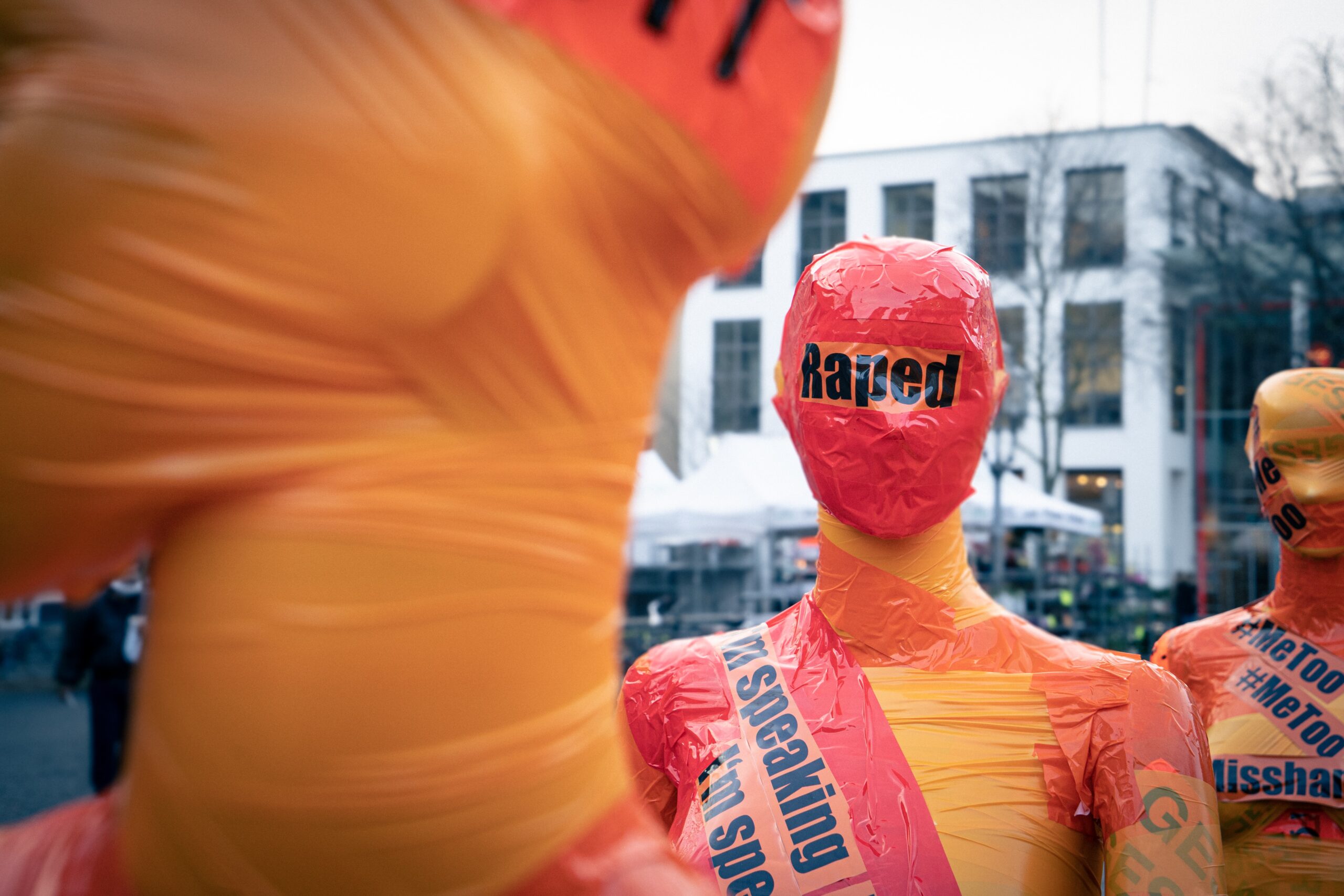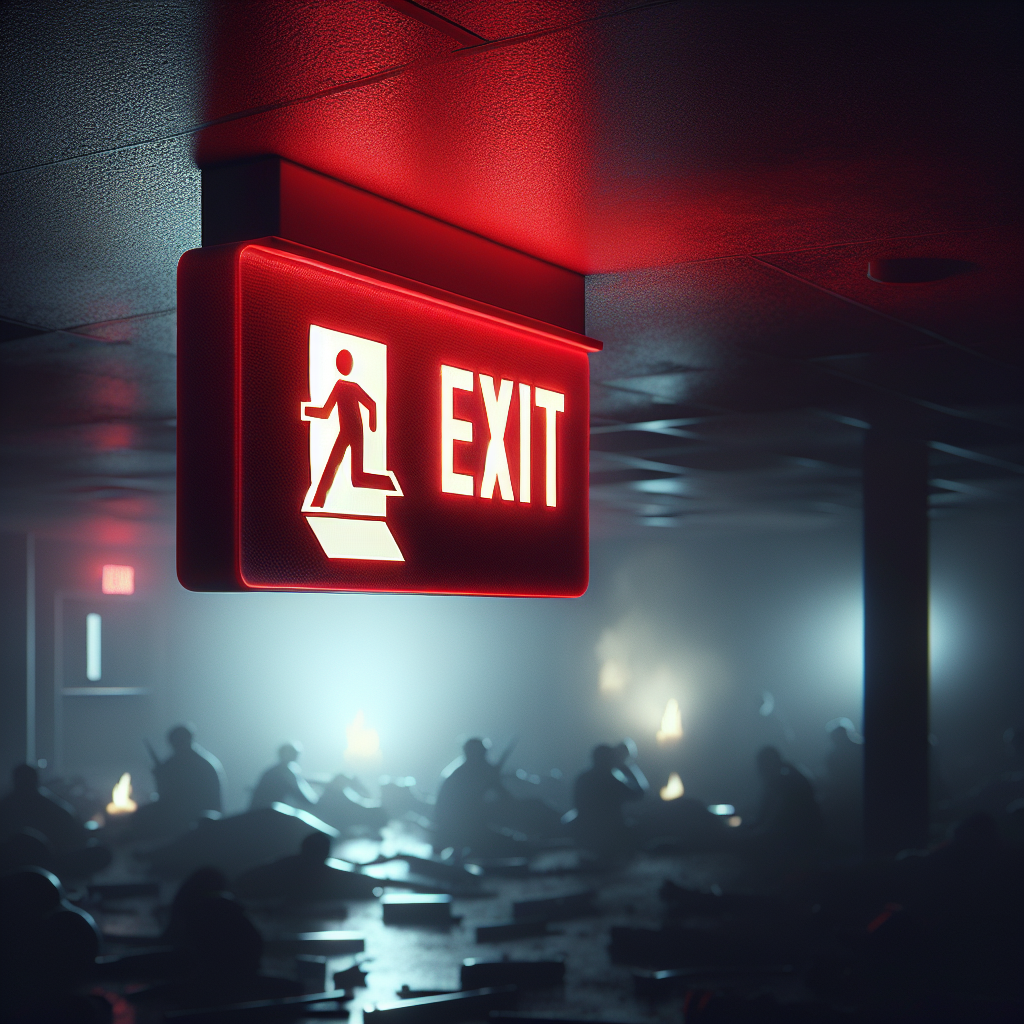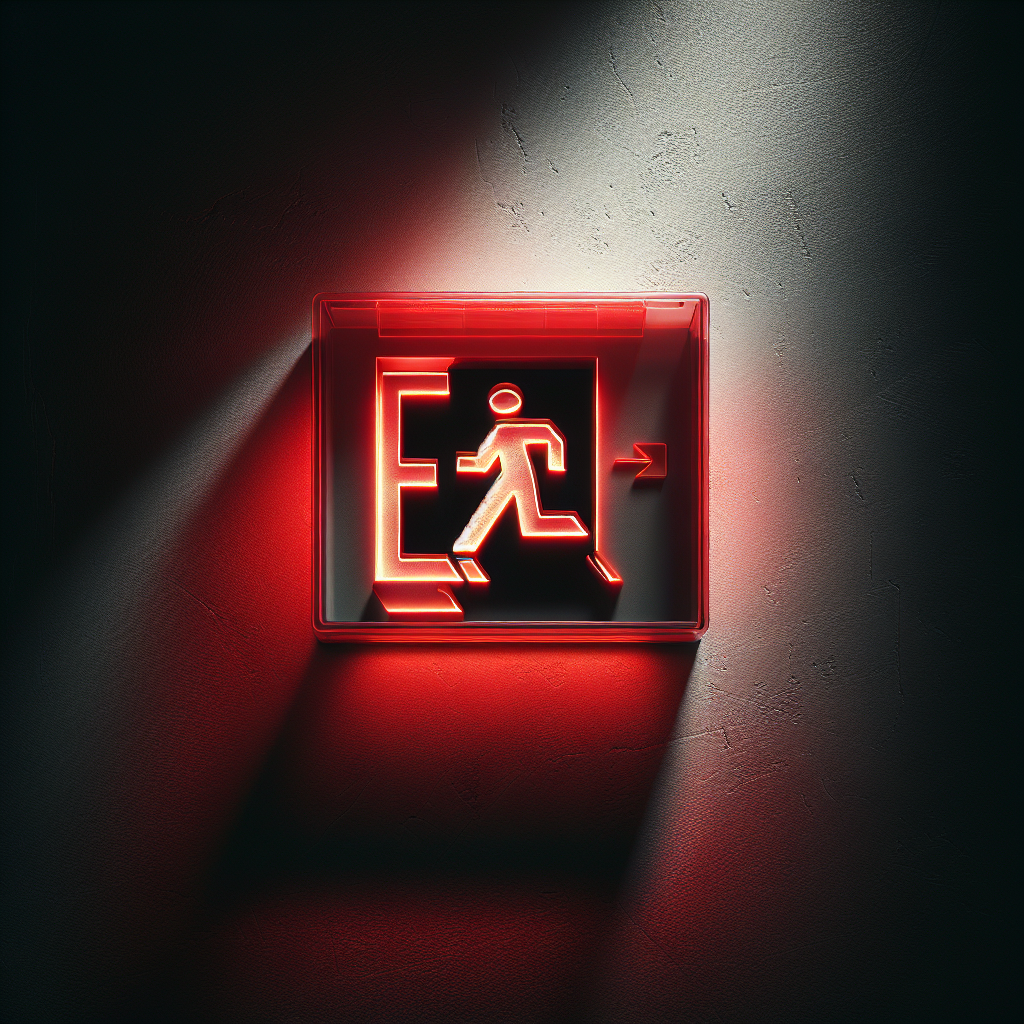In today’s world, it is essential to be prepared for any situation that may arise. One such situation that nobody ever wants to find themselves in is encountering an active shooter. While it may be a frightening thought, knowing how to survive an active shooter can potentially save lives. This article will provide you with valuable tips and strategies to help you respond effectively in the event of an active shooter situation. By understanding the importance of situational awareness, knowing how to take quick action, and understanding the significance of communication, you will gain the confidence to navigate through such a crisis and increase your chances of survival.

Recognizing the Signs of an Active Shooter
When it comes to surviving an active shooter situation, one of the most important steps is being able to recognize the signs that an individual may become an active shooter. While it is impossible to predict with certainty who will turn to violence, understanding the profile of an active shooter can help you identify behavioral red flags.
Understanding the Profile of an Active Shooter
Active shooters come from various backgrounds and have diverse motives, making it challenging to pinpoint a specific profile. However, there are certain characteristics and behaviors that can indicate a potential threat. Often, active shooters exhibit signs of social isolation, excessive anger, a fascination with firearms, or a desire for notoriety. They may also display a pattern of persistent thoughts about violence or have a history of harassment or threats.
Recognizing Behavioral Indicators
Being aware of behavioral indicators can help you identify potential threats and take the necessary precautions. Pay attention to individuals who display drastic changes in behavior, express feelings of hopelessness, or make violent or threatening statements. It is also important to be attentive to signs of aggression, withdrawal, or a preoccupation with previous mass shootings. Additionally, take note of individuals who show signs of deep resentment, grievances, or a desire for revenge.
Observing Weapons or Preparations
Another crucial aspect of recognizing the signs of an active shooter is being vigilant about observing any weapons or preparations that may indicate an imminent threat. Pay attention to individuals carrying suspicious bags, backpacks, or oversized clothing that could conceal weapons. Keep an eye out for any suspicious behavior, such as someone attempting to access restricted areas or tampering with security measures. If you notice anything unusual, report it to the authorities immediately.
Preparing for an Active Shooter Situation
While it’s important to be aware of the signs of an active shooter, it’s equally vital to be prepared for such a situation. Preparing in advance can significantly increase your chances of survival and minimize panic during an emergency.
Creating a Personal Safety Plan
Start by creating a personal safety plan that outlines the steps you will take in the event of an active shooter situation. Discuss the plan with your family and friends so that everyone is on the same page. Determine escape routes, safe meeting points, and communication methods to ensure everyone’s safety.
Identifying Safe Exit Routes
Familiarize yourself with the layout of your surroundings, whether it be your workplace, school, or any public place you frequent. Identify multiple safe exit routes in case your primary route is blocked or unsafe. Remember, when evacuating, always choose the path that puts the most distance between you and the threat.
Knowing Where to Hide
If escape is not possible, it becomes crucial to know where to hide. Identify areas that can provide you with some level of protection and make it harder for the active shooter to find you. Look for rooms that can be securely locked or barricaded, and avoid places with large windows or glass doors that could be easily breached.
Familiarizing Yourself with the Facility
Take the time to familiarize yourself with the facility’s emergency protocols, including evacuation plans, shelter-in-place procedures, and lockdown protocols. Know the location of fire alarms, emergency exits, and safe rooms. Being well-informed can make a significant difference during a chaotic situation.
Preparing an Emergency Kit
As part of your preparation, assemble an emergency kit that includes essential supplies such as water, non-perishable food items, a first aid kit, a flashlight, and any necessary medications. Keep the emergency kit in an easily accessible location so that you can grab it quickly if needed.
Developing a Survival Mindset
Maintaining a survival mindset is crucial during an active shooter situation. It enables you to stay focused, make rational decisions, and increase your chances of getting through the ordeal unharmed.
Remaining Calm and Focused
In the face of danger, it is natural to feel fear and panic. However, it is essential to remain as calm and focused as possible. Take deep breaths, remind yourself to stay present in the moment, and focus on the steps you need to take to ensure your safety.
Understanding the Fight or Flight Response
Understanding the physiological response of fight or flight can help you manage stress in a high-stakes situation. Recognize that the surge of adrenaline and rapid heartbeat are normal responses to danger. Use this heightened state of awareness to your advantage by staying focused and making quick decisions.
Accepting the Reality of the Situation
Accepting the reality of an active shooter situation is an important step in developing a survival mindset. Acknowledge that this is a life-threatening event and that your actions and decisions can make a crucial difference. Embrace the mindset that you have the power to act in your own best interest and increase your chances of survival.

Making a Commitment to Survival
To increase your chances of survival, make a firm commitment to yourself that you will do whatever it takes to stay safe during an active shooter situation. This commitment can help you stay focused, think clearly, and take decisive actions to protect yourself and others around you.
Responding to an Active Shooter
When faced with an active shooter, it is essential to respond quickly and effectively to increase your chances of survival. Understanding the following steps can help guide your actions in such a high-stress situation.
Escape if Possible
If there is a safe and clear path to escape, do so immediately. Leave your belongings behind and encourage others to come with you. Time is of the essence, so act decisively but without jeopardizing your safety.
Identify Safe Exit Points
As you make your escape, be aware of alternative exit points in case your intended path is blocked or unsafe. Stay alert and navigate to the nearest exit using your knowledge of the facility’s layout.
Leave Personal Belongings Behind
In an active shooter situation, your safety should be the top priority. Leave personal belongings such as bags, purses, or laptops behind. These possessions can slow you down or hinder your ability to escape.
Help Others Escape if Safe
If it is safe to do so, assist others in evacuating. Keeping a calm demeanor and encouraging those around you can make a difference in their ability to escape. Support each other and prioritize the safety of everyone involved.
Prevent Others from Entering the Area
As you evacuate, be mindful of others in the vicinity. If possible, take steps to prevent others from entering the area of danger. Warn them about the situation and direct them towards safety.

Hiding from an Active Shooter
If escape is not possible, finding a secure location to hide is the next best option. Here are some steps to follow when hiding from an active shooter.
Choosing a Secure Location to Hide
Select a location that provides both concealment and cover. Concealment hides you from the shooter’s view, while cover offers physical protection. Ideally, choose a room with a lockable door and minimal windows.
Locking or Barricading Doors
Secure the room by locking or barricading the doors. Use furniture, heavy objects, or anything else that can provide an additional layer of protection. Make it as difficult as possible for the shooter to enter.
Silencing Your Phone and Turning off Lights
Once inside the secured room, silence your phone and turn off all lights. Ensure that your presence is not easily detected by the active shooter. Remaining quiet and hidden increases your chances of staying safe.
Finding Concealment within the Room
Once you have secured the room, find a position that offers maximum concealment. Stay away from windows, and if possible, position yourself behind furniture or other objects that can provide additional cover.
Staying Quiet and Still
Maintain utmost silence and stillness while hiding. Avoid making any noise that could alert the active shooter to your presence. Stay calm, control your breathing, and be prepared to stay hidden until it is safe to come out.
Preparing for Confrontation
In some situations, confronting the active shooter may become necessary. While it should be considered a last resort, preparing for such a confrontation can help increase your chances of survival.

Finding Improvised Weapons
If confronted by an active shooter, it may be necessary to use improvised weapons to defend yourself. Look around for any objects that can be used as weapons, such as chairs, fire extinguishers, or heavy items that can be thrown to distract the shooter.
Creating a Plan with Others
If you are not alone, coordinate with others who are also in a position to confront the shooter. Communicate your plan, establish roles and responsibilities, and work together to increase your chances of overpowering the threat.
Positioning Yourself Strategically
When engaging an active shooter, positioning yourself strategically is crucial. Look for cover and try to maintain a distance that allows you to strike when the opportunity arises. Stay vigilant and be prepared to use force to protect yourself and others.
Building Mental and Emotional Resilience
Preparing for confrontation requires mental and emotional resilience. Practice visualization techniques and mentally rehearse your plan of action. Remember, the goal is to neutralize the threat and stay safe.
Engaging an Active Shooter
Engaging an active shooter should be considered a last resort when all other options for survival have been exhausted. However, in certain situations, it may be necessary to take action to protect yourself and others.
Consider Engaging as a Last Resort
Before engaging an active shooter, carefully assess the situation and evaluate the risks. Only consider engaging if you have no other option for survival. Engaging the shooter should be a collective effort if possible, to increase the likelihood of success.
Using Improvised Weapons
If you have access to improvised weapons, use them strategically and with force. Aim for vulnerable areas such as the head, neck, or groin to incapacitate the shooter. Remember, your primary objective is to neutralize the threat.

Targeting Vulnerable Areas
When engaging the shooter, target vulnerable areas that can immobilize or disarm them. Strikes to the eyes, throat, or other pressure points can be effective in subduing an attacker. Act with speed, precision, and determination.
Working with Others to Overwhelm the Shooter
If you are not alone, work together with other individuals to overwhelm the shooter. Coordinate your efforts and use the element of surprise to your advantage. By acting in unison, you can increase your chances of successfully stopping the threat.
Interacting with Law Enforcement
When law enforcement arrives on the scene of an active shooter situation, it is crucial to cooperate and follow their instructions. Your actions during this critical phase can help prevent any misunderstandings and support the overall response efforts.
Keeping Your Hands Visible and Empty
As law enforcement arrives, ensure that your hands are visible and empty. Do not make any sudden movements or reach for personal belongings. Show your willingness to comply and follow their instructions.
Following Instructions Carefully
Listen carefully to the instructions given by law enforcement and follow them without hesitation. The officers are trained to handle these situations and will provide guidance to ensure your safety. Cooperating fully can help de-escalate the situation.
Providing Relevant Information
If you have any information that may assist law enforcement, provide it calmly and accurately. This may include descriptions of the shooter, their location, or any details about their actions. Your information could be vital in bringing the situation to a safe resolution.
Remaining Calm and Cooperative
Throughout your interaction with law enforcement, remain calm and cooperative. Avoid arguing or questioning their actions, as their priority is to neutralize the threat. By maintaining a cooperative attitude, you contribute to a safer and more efficient response.
Recovering from a Traumatic Event
Experiencing an active shooter situation can be an immensely traumatic event. Taking steps to recover emotionally and mentally is essential for healing and moving forward.
Seeking Emotional Support
After the incident, seek emotional support from friends, family, or professionals trained in trauma counseling. Share your experience and emotions in a safe and supportive environment. Communicating your feelings can help alleviate the psychological impact of the event.
Recognizing Common Reactions to Trauma
Understand that experiencing an active shooter situation can lead to various emotional and physiological reactions. Reacting differently from others is normal, and these reactions may include anxiety, depression, anger, heightened vigilance, sleep disturbances, or nightmares. Recognize that these reactions are part of the healing process.
Engaging in Self-Care
Engaging in self-care is crucial for recovery. Take the time to engage in activities that bring you comfort and relaxation. Engaging in exercise, practicing mindfulness or meditation, and spending time with loved ones can all contribute to your emotional well-being.
Finding Professional Help if Needed
If the trauma persists and begins to interfere with your daily life, seeking professional help is highly recommended. Trauma therapists and counselors can provide specialized support to navigate the complexities of the healing process and develop effective coping mechanisms.
Preparing for Future Incidents
While it is impossible to predict when or where an active shooter incident may occur, being prepared for future incidents is essential. Learn from your experience and take proactive measures to enhance your safety and the safety of others.
Reflecting on the Experience
Reflect on your experience and evaluate your actions and decision-making during the active shooter incident. Identify areas for improvement and use the knowledge gained to enhance your preparedness for future emergencies.
Updating Your Personal Safety Plan
Based on your reflections, update your personal safety plan to address any shortcomings or gaps in your previous preparations. Incorporate any lessons learned and make the necessary adjustments to increase your effectiveness in similar situations.
Advocating for Improved Security Measures
Advocate for improved security measures in your workplace, school, or community. Raise awareness about active shooter preparedness and engage in conversations about safety protocols and procedures. Working collectively to enhance security can create a safer environment for everyone.
Educating Others on Active Shooter Preparedness
Share your knowledge and experiences with others to help them become better prepared for active shooter situations. Educate friends, family, and colleagues about the signs to recognize, the steps to take during an incident, and the importance of developing a survival mindset. By spreading awareness, you contribute to a more vigilant and prepared community.
By understanding the signs of an active shooter, creating a personal safety plan, developing a survival mindset, and knowing how to respond in different scenarios, you can enhance your chances of surviving an active shooter incident. Remember, preparation and awareness are key to your safety and the safety of others. Stay vigilant, stay prepared, and prioritize your well-being in any emergency situation.






